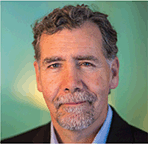

PHOTO: JOHNS HOPKINS BLOOMBERG SCHOOL OF PUBLIC HEALTH
This month marks a somber anniversary—40 years since the first reported cases in the United States of what would later become known as AIDS. There have been tremendous basic, clinical, and prevention advances in HIV science over the past four decades. Yet, despite widespread messaging that the United States is on track to “end AIDS,” the latest trends in infection tell a different story. One fundamental reality underlies the country’s failure to achieve control of the HIV epidemic and could undermine efforts to end AIDS—the lack of access to health care for all Americans.
The 2019 (pre–COVID-19) map of AIDS in America has shifted. According to a May 2021 report from the US Centers for Disease Control and Prevention (CDC), the South—from Texas through Louisiana, Mississippi, Georgia, Florida, and the Carolinas to Washington, DC—is now the most affected region. And the epidemic is markedly concentrated, with 66% of new diagnoses reported among gay, bisexual, and other men who have sex with men (MSM).
Although there was a modest overall decline in new diagnoses of roughly 8% nationally, much of this was attributed to a 33% decline in MSM aged 13 to 24. This heartening trend, attributed to the increasing use of pre-exposure prophylaxis (PrEP) in this age and risk group, masks a challenging reality. PrEP has had a substantial impact on HIV acquisition risks among white MSM, but rates of access and use are sharply lower among Black and Latinx MSM. The lifetime risk acquisition for a young Black gay man in America is an astonishing 50%. The 2019 data suggest that this health disparity is widening.
The geographic and racial disparities are just as marked for women. Black women accounted for 13% of US women in 2019, but for 55% of all new infections in women. This reality is summarized starkly in the CDC report: “African Americans continue to face rates of infection that are more than 8 times as high as whites, and Hispanics/Latinos face rates that are almost 4 times as high, in large part because they experience the greatest barriers to accessing prevention and care services.”
What are the drivers of these trends and how can we do better? Numerous studies make clear that individual-level risks for HIV cannot account for these disparities. It was reported a decade ago that Black MSM had much lower individual-level risks for HIV acquisition compared to white MSM. Black MSM, however, were more likely to have undetected HIV infection or untreated HIV disease, were poorer, were less likely to have health insurance, and were more likely to have an untreated sexually transmitted infection, notably syphilis. These attributes are markers of lack of access to health care and of the social determinants of health. Indeed, the current geography of HIV in the United States reflects those states that refused to expand Medicaid benefits through the Affordable Care Act. What used to be called the cotton belt, and then the syphilis belt, is now the HIV belt. It should surprise no one that this is the region with the lowest rates of COVID-19 immunization nationally—nor that racial and ethnic minority burdens for COVID-19 so swiftly replicated those long known for HIV/AIDS.
Tools exist to address these marked health disparities, but they have to be implemented where they will matter most—where new diagnoses are occurring now. Access to effective prevention, including PrEP, must be expanded to those at risk in contexts of culturally competent care. And it is necessary to implement the suite of tools to prevent transmission among people who inject drugs, including needle and syringe exchanges, substance use treatment on demand, and antiviral therapy for those living with HIV. These are all evidence-based measures, which should have been taken to scale decades ago. For these interventions to work, the community of people affected by HIV must be front and center in our shared efforts.
If we are serious about ending AIDS—and we must be—we must extend the health care franchise to all Americans. Whether we have the political will to achieve this long-held goal is uncertain, but the Biden administration has already expanded health care access through the Affordable Care Act and is committed to addressing the systemic racial, ethnic, sexual, gender, and minority inequalities that are at the heart of AIDS in America. Entering the fifth decade of this epidemic, we must finally address the root causes of health disparities. The country must finally accept that health care is a human right from which no one should be excluded.